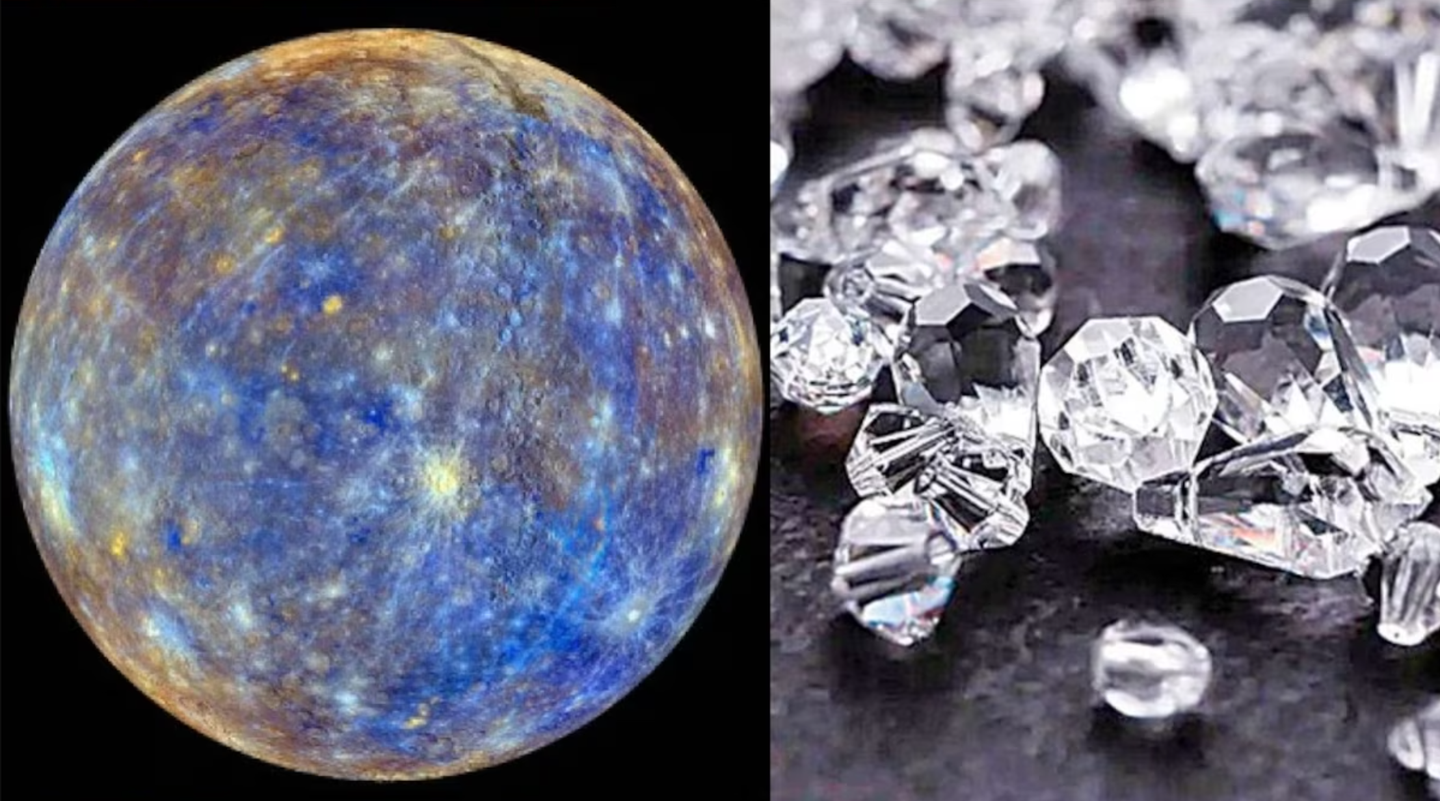Researchers discover the surprising cause of itchy skin
Skin conditions such as eczema, also known as atopic dermatitis, affect a significant portion of the population

[Dec. 26, 2023: JJ Shavit, The Brighter Side of News]
While previous research has predominantly focused on the role of the immune system and inflammation in generating itchiness, a groundbreaking study has shed light on a different culprit: bacteria. (CREDIT: Creative Commons)
If you've ever experienced the maddening sensation of itchy skin, you're not alone. Many of us have wondered what might be causing this incessant urge to scratch. While previous research has predominantly focused on the role of the immune system and inflammation in generating itchiness, a groundbreaking study has shed light on a different culprit: bacteria.
In a recent report published in the journal Cell, scientists reveal how a specific bacterium, Staphylococcus aureus, can release an enzyme that triggers itching sensations, providing new hope for potential treatments for common skin conditions like eczema.
Isaac Chiu, a researcher at Harvard Medical School who specializes in studying the interactions between microbes and nerve cells, spearheaded this innovative investigation. Chiu notes that skin conditions such as eczema, also known as atopic dermatitis, affect a significant portion of the population, with approximately 20% of children and 10% of adults experiencing its symptoms. However, the exact cause of chronic itchiness in these conditions has remained elusive until now.
Chiu's earlier work had highlighted the ability of bacteria to directly affect nerve cells, causing pain. This insight prompted him to question whether microbes like Staphylococcus aureus might also play a role in triggering itchiness.
Related Stories:
Chiu states, "So this made us ask: Could certain microbes like Staphylococcus aureus also particularly be in some way linked to itch? Is there a role for microbes in talking to itch neurons?"
To investigate this hypothesis, Chiu and his team conducted experiments on laboratory mice, applying Staphylococcus aureus to their skin. The results were striking, as the mice exhibited vigorous scratching behavior that led to skin damage extending beyond the initial exposure site. This observation raised the question: Could a specific enzyme released by the bacteria be responsible for this itch-inducing effect?
Further experimentation revealed that a bacterial enzyme called protease V8 was indeed the key player. This enzyme, when released by Staphylococcus aureus, activated a protein present on nerve cells in the skin. The activation of this protein generated nerve signals interpreted by the brain as itching sensations. Liwen Deng, a researcher at Harvard Medical School, emphasizes, "Our study is really the first to show that the microbe can directly activate itch neurons and cause itch."
Remarkably, this protein is also found on certain blood cells and is involved in blood clotting. As serendipity would have it, an FDA-approved anti-clotting medication could effectively block the activation of this protein on skin neurons. Deng remarks, "We treated them orally with the drug, and it completely blocked the itching and scratching that we normally observe when we apply bacteria to mice." This discovery opens the door to the possibility of developing topical medications or skin creams containing this drug to alleviate itchiness in affected individuals.
The significance of these findings has not gone unnoticed in the scientific community. Brian Kim, a dermatologist and researcher at the Icahn School of Medicine at Mount Sinai in New York, who has previously investigated the immune factors responsible for itching, describes the research as "amazing."
Graphical Abstract: Staphylococcus aureus, a bacterial pathogen associated with itchy skin diseases, directly activates pruriceptor sensory neurons to drive itch. (CREDIT: Cell)
In the past, some dermatologists have resorted to treatments like diluted bleach baths or oral antibiotics, targeting Staphylococcus aureus in the hopes of alleviating itching symptoms. Kim underscores the desperation among patients who suffer from these conditions, highlighting the uncomfortable and often debilitating consequences of constant scratching, which can lead to skin damage, disrupted sleep, and feelings of embarrassment.
The revelation that bacteria can directly induce itching sensations offers a fresh perspective on the underlying causes of itchiness. Kim suggests that this discovery may not be limited to Staphylococcus aureus alone, raising the possibility that other bacteria residing on the skin could also interact with nerve cells and contribute to itching. A future treatment strategy targeting specific molecules responsible for itchiness could provide a more precise and less invasive approach that avoids harming beneficial bacteria residing on and within the body.
The researchers also speculate about why certain bacteria might have evolved to provoke itching in their hosts. One theory suggests that inducing scratching behavior could help these microbes spread to other individuals or different areas of the host's body. Alternatively, scratching might create micro-injuries in the skin, providing an advantageous environment for bacteria to establish themselves. Deng comments, "We're not actually sure why Staphylococcus aureus would want to be inducing an itching response and whether it's beneficial for the microbe. We're really interested in testing that."
Despite itching being a common phenomenon, it remains somewhat of an enigma for scientists in terms of its precise mechanisms. Deng concludes, "We think that we've kind of identified a new way to think about what causes itch and how we can potentially treat it." The discovery of bacteria's direct involvement in inducing itchiness opens up exciting avenues for future research and offers hope for the development of more targeted and effective treatments for those who suffer from chronic skin conditions characterized by relentless itching.
Discovering the Genetics of Skin Color
"People have always been intrigued by the connection between skin pigmentation and ethnicity," explained Keith C. Cheng, distinguished professor at Penn State. "But our team has discovered that the genetic basis is more intricate than we previously thought."
The research confirmed that the genes associated with East Asian and Native American ancestry are responsible for their lighter skin tones, and not the genes that give Europeans their lighter skin. This revelation not only underscores the significance of tracing the genes that determine skin color according to one's ancestral roots but also offers insights into preventing specific skin cancers.
"We've made significant strides in understanding our roots and the molecular causes of color changes in the skin," said Cheng. "This can also help us understand why Europeans, despite sharing a similar skin shade with East Asians and Native Americans, are more susceptible to sun-induced melanoma."
The Kalinago Key
Interestingly, the answers to these questions might be hidden in the DNA of the Kalinago people, inhabitants of the tiny Caribbean island of Dominica, located north of Martinique. The Kalinago are notable for their minimal European ancestry, compared to other Native American groups in the Caribbean.
Penn State researchers spent 15 years working with the Kalinago people in the Caribbean to better understand the genetics underpinning skin tone in people without significant European ancestry. (CREDIT: Khai C. Ang)
Cheng began his studies with the tribe around 15 years ago, after his team identified the gene responsible for lighter skin in Europeans. Funded by the National Institutes of Health, Cheng, alongside co-author Khai C. Ang, worked with the Kalinago to delve deeper into the genetic makeup of their skin color.
"After pinpointing the gene SLC24A5, which contributes to the light skin of Europeans, we were curious about its implications for East Asians and Native Americans," said Cheng. "These groups also possess light skin but are significantly less prone to melanoma compared to Europeans. This raised the question: Why is that?"
The Kalinago people live on Dominica, a small island in the Caribbean. (CREDIT: Khai C. Ang)
Decoding Skin Color's Science
As Khai C. Ang noted, the study of skin color variations has been a longstanding puzzle in human biology. Our ancestors all originated from Africa. As they ventured out, two primary migration paths evolved: the European route encompassing Europe and the Indian subcontinent, and the East Asian route that includes the Americas. Each group adapted to their new environments, leading to differences in skin pigmentation.
Ang explained the role of melanin, the pigment responsible for skin, hair, and eye color. "In regions with scarce UV rays, those with reduced melanin can harness sunlight better, vital for vitamin D production." This explains why Native Americans and East Asians, despite having less melanin than Africans, still have lower melanoma rates compared to Europeans.
The research team made several trips to Dominica to connect with the Kalinago people. Pictured here, from left, are Cheng; Mas Clem, a former Kalinago chief; a Kalinago child; and paper co-author Katherine P. Reid. (CREDIT: Khai C. Ang)
"Although there are many genetic variations affecting skin tones, historically, humans have been grouped into three primary ancestries: African, Native American/East Asian, and European/South Asian. Yet European skin, despite similar shades as the other two groups, is more UV-sensitive. There's a genetic and cellular protective mechanism we haven't yet fully grasped," Ang said.
Cheng further elaborated that different genetic mechanisms dictate the skin tones for each human migration branch. This helps researchers understand why Europeans are more prone to melanoma.
Beyond working together, the researchers and the Kalinago people also spent time hiking and participating in cultural activities. Here, Ang on the far left, paper co-author Katherine P. Reid in the blue shirt in the middle, and Cheng in the blue shirt second from the right, pose with traditional Kalinago dancers. (CREDIT: Khai C. Ang)
The Partnership with the Kalinago
However, this study was about more than just genetics. The Kalinago initially were cautious participants. "Their past with Europeans, marked by colonialism, made them understandably wary," Cheng recalled. But over a decade, the team built a bond with the tribe, emphasizing the scientific value of their collaboration.
Repeated visits to Dominica, facilitated by local Kalinago nurses, helped gather crucial data. "Our collaboration helped unlock a piece of the genetic puzzle of skin color," said Ang, emphasizing the mutual respect between the researchers and the Kalinago.
The researchers met with the Kalinago Council, which changes leadership with new elections every few years, several times over the course of the project. The late John W. Hawley, paper co-author, on the far left, Kalinago Chief Williams in the yellow shirt and Ang pose with the Kalinago Council on one visit. (CREDIT: Khai C. Ang)
The Revelation of Melanin
A key discovery was that the Kalinago people had about 55% Native American and 32% African ancestry, with only around 12% European genetics. This unique genetic composition provided an invaluable resource for the researchers.
All humans share roughly 20,000 genes, but individual combinations of these genes (alleles) differ. Cheng illustrated this point: "It's these gene allele combinations that define one's ancestry. These combinations have a profound effect on skin color."
Nurses in the Kalinago community traveled with the researchers to connect with more distant members of the tribe and to assist in data collection. (CREDIT: Khai C. Ang)
Ang's team analyzed melanin in participants using a device that measured light reflection on their skin, while also collecting DNA samples. From their comprehensive data, the researchers concluded that none of the known pigmentation genes accounted for the skin color in the Kalinago population.
"We can now confidently say that previously identified pigmentation genes aren't the sole contributors to skin color for Native Americans and East Asians," Cheng declared. "The Kalinago could hold the keys to unlocking the true genes responsible."
The research conducted with the Kalinago community reshapes our understanding of the genetics behind human skin pigmentation. It stands as a testament to the wonders of human diversity and the power of collaborative science.
For more science and technology stories check out our New Discoveries section at The Brighter Side of News.
Note: Materials provided above by The Brighter Side of News. Content may be edited for style and length.
Like these kind of feel good stories? Get the Brighter Side of News' newsletter.



